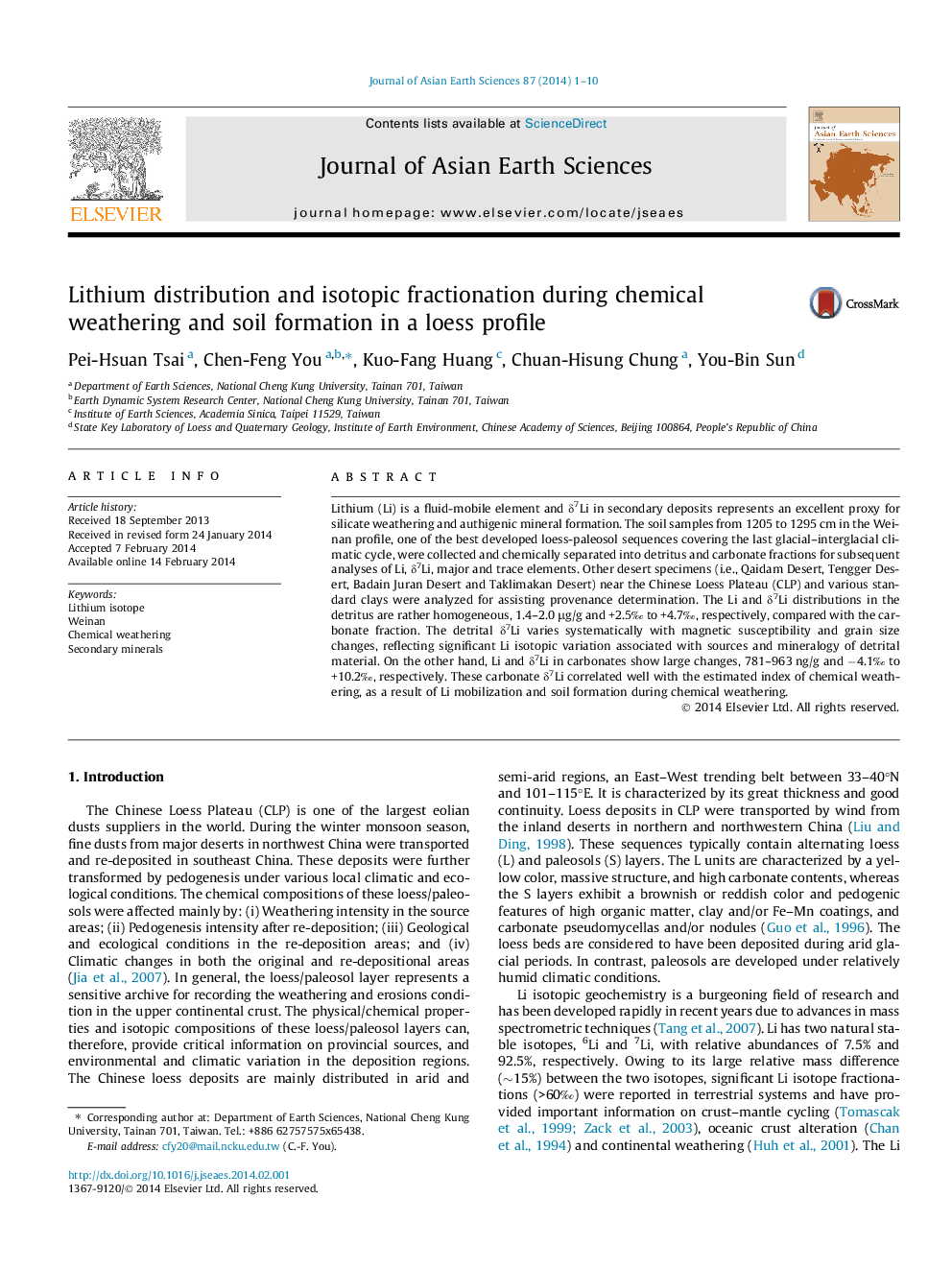| Article ID | Journal | Published Year | Pages | File Type |
|---|---|---|---|---|
| 6444410 | Journal of Asian Earth Sciences | 2014 | 10 Pages |
Abstract
Lithium (Li) is a fluid-mobile element and δ7Li in secondary deposits represents an excellent proxy for silicate weathering and authigenic mineral formation. The soil samples from 1205 to 1295 cm in the Weinan profile, one of the best developed loess-paleosol sequences covering the last glacial-interglacial climatic cycle, were collected and chemically separated into detritus and carbonate fractions for subsequent analyses of Li, δ7Li, major and trace elements. Other desert specimens (i.e., Qaidam Desert, Tengger Desert, Badain Juran Desert and Taklimakan Desert) near the Chinese Loess Plateau (CLP) and various standard clays were analyzed for assisting provenance determination. The Li and δ7Li distributions in the detritus are rather homogeneous, 1.4-2.0 μg/g and +2.5â° to +4.7â°, respectively, compared with the carbonate fraction. The detrital δ7Li varies systematically with magnetic susceptibility and grain size changes, reflecting significant Li isotopic variation associated with sources and mineralogy of detrital material. On the other hand, Li and δ7Li in carbonates show large changes, 781-963 ng/g and â4.1â° to +10.2â°, respectively. These carbonate δ7Li correlated well with the estimated index of chemical weathering, as a result of Li mobilization and soil formation during chemical weathering.
Related Topics
Physical Sciences and Engineering
Earth and Planetary Sciences
Geology
Authors
Pei-Hsuan Tsai, Chen-Feng You, Kuo-Fang Huang, Chuan-Hisung Chung, You-Bin Sun,
